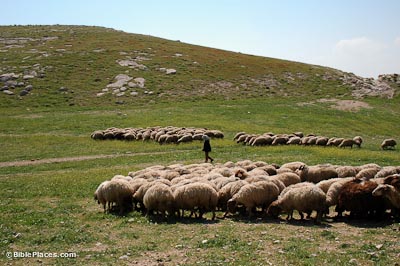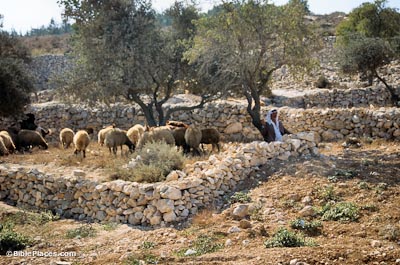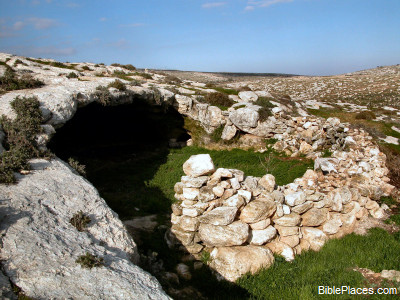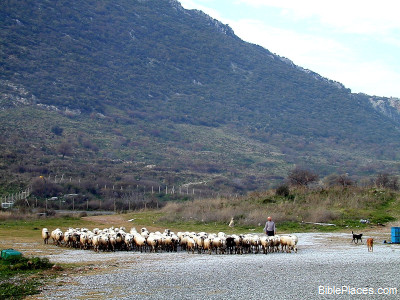- Commonly taught that there are no parables in John
- Actually there is just one
- All the characteristics of a parable
- And as with some others, they claim not to understand and Jesus gives an explanation
- Who would like to have a go at explaining the parable?
- Why does it get such a strong reaction?
- Here are some pictures of folds:
- Three aspects:
- The True and False Shepherds
- The True Sheep
- The Self-sacrifice of the Good Shepherd
1. The True and False Shepherds
- This is why they didn’t like it.
- Those are wonderful promises at the end, and we will come back to them
- Also we have to see the context of John 10.
- The previous chapter has an amazing healing of a man born blind
- Jesus put mud on his eyes, and he washed them and could see
- So the Pharisees arrested the man for the crime of having been healed
- John 19:24–39
- Are there still “thieves and robbers”?
- In John’s first letter he warns them about them and says:
- “many false prophets have gone out into the world” 1 John 4:1
- One of the main characteristics from the Ezekiel passage is making excessive amounts of money off God’s people.
- Do we still have those today?
- But I think this includes anyone in society who says they are trying to help you but are actually trying to rip you off.
- Businesses
- Advertizing
- Entertainment industry
- Politicians
- Not everyone is bad, but none of them are true shepherds
- None of them can deliver!
2. The True Sheep
- In the middle east, even today, sheep follow the shepherds.
- video
- Quote from Historical Geography of the Holy Land
- Sometimes when Luke comes to visit us, I hear the bell ring, then people talking...
- So can anyone tell me what this means, that true sheep are the ones that hear Jesus’ voice?
- When Jesus says “hear”, does he just mean “I heard what you said”
- What if a sheep said “That sounds like my old shepherd calling, but I’m just busy here right now”
- Does that count as hearing?
- Actually for a sheep, hearing==following
- And for us as well: The true sheep will not only recognize the voice of Jesus, but will jump to follow as well.
- Many of Jesus’ parables are about hearing
- “Take heed how you hear!”
- When Jesus says “hear”, does he just mean “I heard what you said”
- This is how you become a Christian!
- You recognize that Jesus’ words are the words of truth
- He calls and you come
- Something in you knows that he really is the Good Shepherd
- He is calling you this afternoon:
- Simply tell him you want to follow him instead of following the thieves and robbers
- and ask him to make you one of his sheep
- The best way to start hearing his voice is by reading his words in the Bible!
- How do we progress in hearing the Shepherd
- If you are faithful with a small amount, Jesus will give you more
- e.g. Jane wants to learn to hear God’s voice prophetically.
- She’s stopped reading the Bible because she says she wants something personal
- But there are things Jesus has said to her in the Bible that she is ignoring
- He says to be patient —she admits she really isn’t
- He says to love others sacrificially —she finds that a boring idea
- Jesus says to her, “I would love to talk more to you Jane, but how can I trust you with more when you are not doing anything with what I have already given you”
- If I told you to listen out for the voice of “Gordon”
- I have no idea what he sounds like!
3. The Self-sacrifice of the Good Shepherd
- Look at what God says:
- v11–16a
We have such a wonderfully good Shepherd!
- He had given his life for us
- We are secure!






